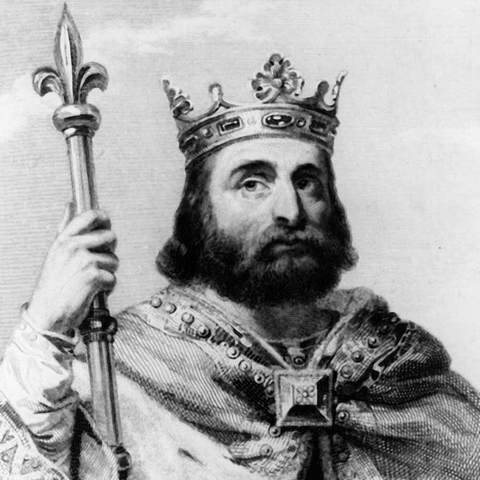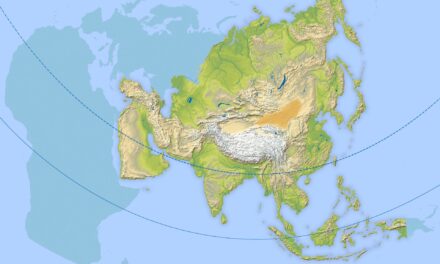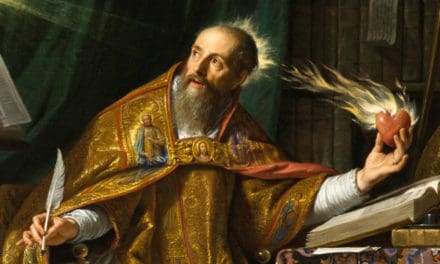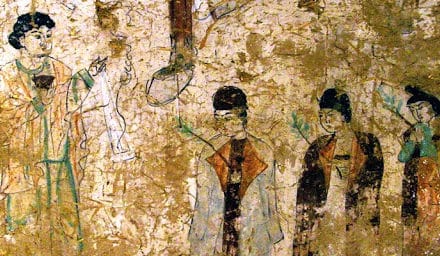The title of this episode is “What a Mess!”
As is often the case, we start by backing up & reviewing material we’ve already covered so we can launch into the next leg of our journey in Church History.
Anglo-Saxon missionaries to Germany had received the support of Charles Martel, a founder of the Carolingian dynasty. Martel supported these missions because of his desire to expand his rule eastwards into Bavaria. The Pope was grateful for his support, and for Charles’ victory over the Muslims at the Battle of Tours. But Martel fell afoul of papal favor when he confiscated Church lands. At first, the Church consented to his seizing of property to produce income to stave off the Muslim threat. But once that threat was dealt with, he refused to return the lands. Adding insult to injury, Martel ignored the Pope’s request for help against the Lombards taking control of a good chunk of Italy. Martel denied assistance because at that time the Lombards were his allies. But a new era began with the reign of Martel’s heir, Pippin or as he’s better known, Pepin III.
Pepin was raised in the monastery of St. Denis near Paris. He & his brother were helped by the church leader Boniface to carry out a major reform of the Frank church. These reforms of the clergy and church organization brought about a renewal of religious and intellectual life and made possible the educational revival associated with the greatest of the Carolingian rulers, Charlemagne & his Renaissance.
In 751, Pepin persuaded Pope Zachary to allow Boniface to anoint him, King of the Franks, supplanting the Merovingian dynasty. Then, another milestone in church-state relations passed with Pope Stephen II appealing to Pepin for aid against the Lombards. The pope placed Rome under the protection of Pepin and recognized him and his sons as “Protectors of the Romans.”
As we’ve recently seen, all of this Church-State alliance came to a focal point with the crowning of Charlemagne as Emperor of the Holy Roman Empire in AD 800. For some time the Popes in Rome had been looking for a way to loosen their ties to the Eastern Empire & Constantinople. Religious developments in the East provided the Popes an opportunity to finally break free. The Iconoclastic Controversy dominating Eastern affairs gave the Popes one more thing to express their disaffection with. We’ll take a closer look at the controversy later. For now, it’s enough to say the Eastern Emperor Leo III banned the use of icons as images of religious devotion in AD 726. The supporters of icons ultimately prevailed but only after a century of bitter and at times violent dispute. Pope Gregory II rejected Leo’s edict banning icons and flaunted his disrespect for the Emperor’s authority. Gregory’s pompous and scathing letter to the Emperor was long on bluff but a dramatic statement of his rejection of secular rulers’ meddling in Church affairs. Pope Gregory wrote: “Listen! Dogmas are not the business of emperors but of pontiffs.”
The reign of what was regarded by the West as a heretical dynasty in the East gave the Pope the excuse he needed to separate from the East and find a new, devoted and orthodox protector. The alliance between the papacy and the Carolingians represents the culmination of that quest, and opened a new and momentous chapter in the history of European medieval Christianity.
In response to Pope Stephen’s appeal for help against the Lombards, Pepin recovered the Church’s territories in Italy and gave them to the pope, an action known as the ‘Donation of Pepin’. This confirmed the legal status of the Papal States.
At about the same time, the Pope’s claim to the rule of Italy and independence from the Eastern Roman Empire was reinforced by the appearance of one of the great forgeries of the Middle Ages, the Donation of Constantine. This spurious document claimed Constantine the Great had given Rome and the western part of the Empire to the bishop of Rome when he moved the capital of the empire to the East. The Donation was not exposed as a forgery until the 15th Century.
The concluding act in the popes’ attempt to free themselves from Constantinople came on Christmas Day 800 when Pope Leo III revived the Empire in the West by crowning Charlemagne as Holy Roman Emperor. It’s rather humorous, as one wag put it – the Holy Roman Empire was neither Holy, nor Roman, and can scarcely be called an Empire.
Charlemagne’s chief scholar was the British-born Alcuin who’d been master of the cathedral school in York. He was courted by Charlemagne to make his capital at Aachen on the border between France & Germany, Europe’s new center of education & scholarship. Alcuin did just that. If the school at Aachen didn’t plant the seeds that would later flower in the Renaissance it certainly prepared the soil for them.
Alcuin profoundly influenced the intellectual, cultural and religious direction of the Carolingian Empire, as the 300-some extant letters he wrote reveal. His influence is best seen in the manuscripts of the school at Tours where he later became abbot. His influence is also demonstrated in his educational writings, revision of the Biblical text, commentaries and the completion of his version of Church liturgy. He standardized spelling and writing, reformed missionary practice, and contributed to the organizing of church regulations. Alcuin was the leading theologian in the struggle against the heresy of Adoptionism. Adoptionists said Jesus was simply a human being who God adopted & MADE a Son. Alcuin was a staunch defender of Christian orthodoxy and the authority of the Church, the pre-eminence of the Roman Bishop and of Charlemagne’s sacred position as Emperor. He died in 804.
The time at which Alcuin lived certainly needed the reforms he brought & he was the perfect agent to bring them. From the palace school at Aachen, a generation of his students went out to head monastic and cathedral schools throughout the land. Even though Charlemagne’s Empire barely outlived its founder, the revival of education and religion associated with he and Alcuin brightened European culture throughout the bleak and chaotic period that followed. This Carolingian Renaissance turned to classical antiquity and early Christianity for its models. The problem is, there was only one Western scholar who still knew Greek, the Irishman John Scotus Erigena. Still, the manuscripts produced during this era form the base from which modern historians gain a picture of the past. It was these classical texts, translated from Greek into Latin that fueled the later European Renaissance.
The intellectual vigor stimulated by the Carolingian Renaissance and the political dynamism of the revived Empire stimulated new theological activity. There was discussion about the continuing Iconoclastic problem in the East. Political antagonism between the Eastern and the Carolingian emperors led to an attack by theologians in the West on the practices and beliefs of the Orthodox Church in the East. These controversial works on the ‘Errors of the Greeks’ flourished during the 9th C as a result of the Photian Schism.
In 858, Byzantine Emperor Michael III deposed the Patriarch Ignatius I of Constantinople, replacing him with a lay scholar named Photius I, AKA Photius the Great. The now deposed Ignatius appealed to Pope Nicholas I to restore him while Photius asked the Pope to recognize his appointment. The Pope ordered the restoration of Ignatius & relations between East & West sunk further. The issue ended in 867 when Pope Nicholas died & Photius was deposed.
Latin theologians also criticized the Eastern church for its different method of deciding the date of Easter, the difference in the way clergy cut their hair, and the celibacy of priests. The Eastern Church allowed priests to marry while requiring monks to be celibate, whereas the Western Church required celibacy of both.
Another major doctrinal debate was the Filioque [Filly-o-quay] Controversy we briefly touched on in an earlier episode. Now, before I get a barrage of emails, there’s debate among scholars over the pronunciation of Filioque. Some say “Filly-oak” others “Filly-o-quay.” Take your pick.
The point is, the Controversy dealt with the wording of the Nicene Creed as related to the Holy Spirit. The original Creed said the Holy Spirit proceeded from the Father. A bit later, the Western Church altered the wording a bit so as to affirm the equality of the Son of God with the Father. So they said the Spirit proceeded from both Father & Son. Filioque is Latin for “and the Son” thus giving the name of the controversy. The Eastern Church saw this addition as dangerous tampering with the Creed and refused to accept it while the Filioque clause became a standard part of what was considered normative doctrine in the West.
Another major discussion arose over the question of predestination. A Carolingian monk named Gottschalk, who studied Augustine’s theology carefully, was the first to teach ‘double predestination’; the belief that some people are predestined to salvation, while others are predestined to damnation. He was tried and condemned for his views by 2 synods and finally imprisoned by the Archbishop of Rheims. Gottschalk died 20 years later, holding his views to the end.
The other major theological issue of the Carolingian era concerned the Lord’s Supper. The influential Abbot of Corbie wrote a treatise titled On the Body and Blood of the Lord. This was the first clear statement of a doctrine of the ‘real presence’ of Christ’s body and blood in the Communion elements, later called the doctrine of “transubstantiation,” an issue that will become a heated point in the debate between the Roman Church & Reformers.
The reforms of King Pepin and Pope Boniface focused attention on priests. It was clear to all that clergy ought to lead lives beyond reproach. That synod after synod during the 6th, 7th, & 8th Cs had to make such a major issue of this demonstrated the need for reform. Among the violations warned against were the rejection of celibacy, gluttony, drunkenness, tawdry relationships with women, hunting, carrying arms & frequenting taverns.
Monastic developments at this time were significant. The emphasis was on standardization and centralization. Between 813 and 17 a revised Benedictine rule was adopted for the whole of the Carolingian Empire. Another Benedict, a monk from Burgundy, was responsible for an ultra-strict regimen. Charlemagne’s successor, Louis the Pious, appointed Benedict the overseer of all monasteries in the realm, and a few years later his revised Benedictine rule was made obligatory for all monasteries. Sadly, with little long-term effect.
When Louis succeeded Charlemagne, the Pope was able to regain his independence, following a long domination by the Emperor. The imperial theocracy of Charlemagne’s reign would have yielded a ‘state church’ as already existed in the East. But the papacy stressed the superiority of spiritual power over the secular. This was reinforced by the forged Donation of Constantine with its emphasis on papal pre-eminence in the governing of the Empire, not just the Church.
In the middle of the 9th C, priests at Rheims produced another remarkable forgery, the False Decretals. Accomplished with great inventiveness, the Decretals were designed to provide a basis in law which protected the rights of bishops. They included the bogus Donation of Constantine and became a central part of the canon of medieval law. It shored up papal claims to supremacy in church affairs over secular authority. The first Pope to make use of the False Decretals was Nicholas I. He recognized the danger of a Church dominated by civil rulers and was determined to avert this by stressing that the church’s government was centered on Rome, not Constantinople, and certainly not in some lesser city like Milan or Ravenna.
From the late 9th until the mid-11th C, Western Christendom was beset by a host of major challenges that left the region vulnerable. The Carolingian Empire fragmented, leaving no major military power to defend Western Europe. Continued attacks by Muslims in the S, a fresh wave of attacks by the Magyars in the E, and incessant raids by the Norsemen all over the Empire, turned the shards of the empire into splinters. One contemporary lamented, “Once we had a king, now we have kinglets!” For many Western Europeans, it seemed the end of the world was at hand.
The popes no longer had Carolingian rulers as protectors. So the papacy became increasingly involved in the power struggles among the nobility for the rule of Italy. Popes became partisans of one political faction or another; sometimes willingly, other times coerced. But the cumulative result was spiritual and moral decline. For instance, Pope Stephen VI took vengeance on the preceding pope by having his body disinterred and brought before a synod, where it was propped up in a chair for trial. Following conviction, the body was thrown into the Tiber River. Then, within a year Stephen himself was overthrown. He was strangled while in prison.
There was a near-complete collapse of civil order in Europe during the 10th C. Church property was ransacked by invaders or fell into the hands of the nobility. Noblemen treated churches and monasteries as their private property to dispose of as they wished. The clergy became indifferent to duty. Their illiteracy & immorality grew.
The 10th C was a genuine dark age, at least as far as the condition of the Church was concerned. Without imperial protection, popes became helpless playthings for the nobility, who fought to gain control by appointing relatives and political favorites. A chronicle by the German bishop of Cremona paints a graphic picture of sexual debauchery in the Church.
Though there were incompetent & immoral popes during this time, they continued to be respected throughout the West. Bishoprics and abbeys were founded by laymen after they obtained the approval of the papal court. Pilgrimages to Rome hardly slackened during this age, as Christians visited the sacred sites of the West; that is, the tombs of Peter and Paul, as well as a host of other relics venerated in there.
At the lowest ebb of the 10th C, during the reign of Pope John XII, from 955-64, a major change in Italian politics affected the papacy. An independent & capable German monarchy emerged. This Saxon dynasty began with the election of Henry I and continued with his son, Otto I, AKA Otto the Great .
Otto developed a close relationship with the Church in Germany. Bishops and abbots were given the rights and honor of high nobility. The church received huge tracts of land. Thru this alliance with the Church, Otto aimed to forestall the rebellious nobles of his kingdom.
But the new spiritual aristocracy created by Otto wasn’t hereditary. Bishops & abbots couldn’t “pass on” their privileges to their successors. Favor was granted by the King to whomever he chose. Thus, their loyalty could be counted on more readily. In fact, the German bishops contributed money and arms to help the German kings expand into Italy, what is now the regions of East Germany & Poland.
Otto helped raise the papacy out of the quagmire of Italian politics. His entrance into Italian affairs was a fateful decision. He marched south into Italy to marry Adelaide of Burgundy and declare himself king of the Lombards. Ten years later, he again marched south at the invitation of Pope John XII. In February of 962, the Pope tried a renewal of the Holy Roman Empire by crowning Otto and Adelaide in St Peter’s. But the price paid by the pope for Otto’s support was another round of interference in Church affairs.
For the next 300 years, each new German monarch followed up his election by making a march to Rome to be crowned as Emperor. But at this point, it wasn’t so much Popes who made Emperors as it was Emperors who made Popes. And when a pope ran afoul of the ruler, he was conveniently labeled ‘anti-pope’ & deposed, to be replaced by the next guy. It was the age of musical chairs in Rome; whoever grabs the papal chair when the music stops gets to sit. But when the Emperor instructs the band to play again, whoever’s in the chair has to stand and the game starts all over again. Lest you think I’m overstating the case, in 963 Otto returned to Rome, convened a synod which found Pope John guilty of a list of sordid crimes and deposed him. In his place, they chose a layman, who received all of his ecclesiastical orders in a single day to become Pope Leo VIII. He managed to sit in the Pope’s chair less than a year before the music started all over again.





